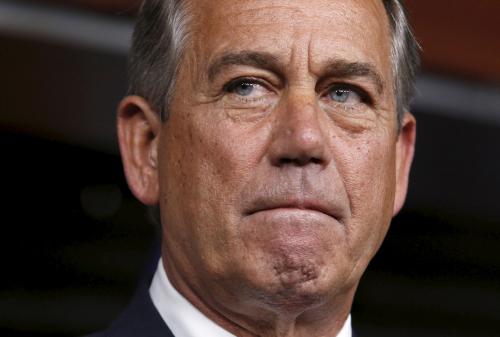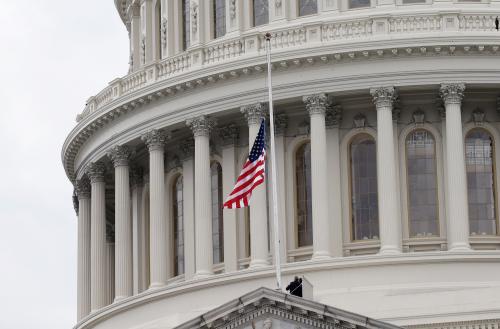This post is part of series by Brookings experts on Trump’s 1st State of the Union.
In less than a week, President Donald Trump will deliver his first State of the Union (SOTU) address. It’s safe to assume that he will follow his predecessors in casting his first year in office as a series of triumphs. With the government shutdown over for now, Trump will congratulate himself for resolving it. His economic message will highlight the country’s low unemployment and high stock market, without mentioning that both are legacies from his predecessor. But he will point to his deregulation and tax changes to claim credit, even though neither policy has been in place long enough to affect employment or growth.
Trump’s economic agenda for 2018 is both largely predictable and almost entirely unrealistic. According to CBO’s most recent forcast, budget deficits will average $1 trillion per year over the next decade (2018–2027). That tells us that Trump is virtually certain to propose deep spending cuts across most domestic areas. The outstanding question is whether he will reassure his base that their entitlements are off-limits or cast his lot with those in the Republican Party determined to privatize and cut Medicare and Medicaid. Wherever Trump lands on budget cuts, it will probably be just for show. Given the GOP’s prospects for the midterm elections and Mitch McConnell’s single-vote majority in the Senate, it’s unlikely that this Republican Congress will be able to pass a budget resolution in 2018, muchless tackle anything as explosive as changes in the big entitlement programs.
Beyond budget cuts, Trump’s most likely initiative will involve new tax breaks for private investors in infrastructure. That’s a non-starter for most Democrats, who want new infrastructure spending, period. And, in the likely absence of a budget resolution, Trump can’t use reconciliation (which requires only a majority vote) to sidestep the Democrats. Here, too, the likely outcome is no action at all.
Trump will certainly say something about trade, especially since a widening budget deficit will lead to a higher trade deficit. He could try to preempt the inevitable criticism by threatening reprisals against China for selling us low-priced goods, beyond his new tariffs on solar panels and washing machines. He will also call for changes in NAFTA. But tearing up the agreement as he once promised is off the table, because it would split the GOP in Congress. Above all else, Trump cannot tolerate such a split, because he knows that his best defense against the growing menace of the Mueller investigation is united support from GOP senators and representatives.
Even in this political environment, Trump could still use his SOTU to advance measures that would help the economy, improve the prospects of his own working-class followers, and even attract bipartisan support. As the President’s economic advisers could confirm, Americans without college degrees—a group that represents more than 60 percent of the U.S. labor force—snagged less than 15 percent of all net new jobs created over the decade from January 2008 to December 2017. Moreover, all of those 1.4 million job gains for people without college degrees went to those who had attended college but never graduated. Over the same decade, the number of high school graduates with jobs fell by 2,095,000 and the number of people working without a high school diploma fell by 900,000, while the number of college graduates with jobs jumped by a remarkable 11,909,000. If any economic problem calls for a populist response, this is it.
Trump and his GOP collegaues are not about to join Bernie Sanders and many Democrats in their populist take on this challenge: free access to college. Nor would doing so help working-class Americans in their 30s, 40s and 50s. Instead, Trump could propose that Washington provide grants to cover the tuition for any adult American who wants to enroll in training courses at a local community college. The proposal could attract some bipartisan support, as almost all congressional districts have a community college. And in a few years, such a program could produce corps of new skilled electricians, accountants, health care workers and plumbers who do not need a bachelor’s degree.
The program also wouldn’t break the budget. The average annual tuition and fees at a two-year community college is $3,440, which works out to $860 per course. If 1,000,000 people each enrolled in two such courses per year, it would cost less than $2 billion per year—spare change in the current $4 trillion-plus budget.
The proposal’s drawbacks are also obvious. To start, it would expand the government’s role in the economy, anathema to many in his Republican Party. More telling, the program could be a double-edged sword for Trump. If it worked, it could relieve much of the anger felt by millions of working-class Americans, when stoking that anger has been Trump’s main way of mobilizing them to his cause.








Commentary
Trump’s 1st State of the Union: Will he lay out a real economic agenda—or take a victory lap?
January 25, 2018